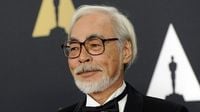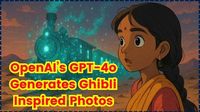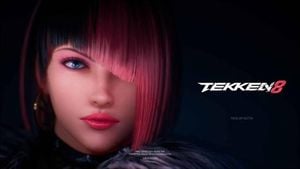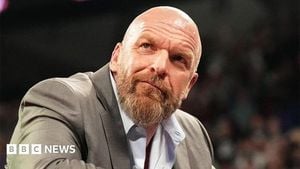In an exciting fusion of cutting-edge technology and timeless artistry, OpenAI’s GPT-4o is transforming how we create and experience visual content. One of the latest viral trends making rounds across social media involves the model’s ability to generate Ghibli-inspired images—AI-generated visuals that mimic the beloved aesthetic of Studio Ghibli films like My Neighbor Totoro, Howl’s Moving Castle, and Spirited Away. What’s most fascinating? These pictures are conjured with nothing more than a text prompt. So how exactly does GPT-4o make this artistic magic happen? And what does this mean for creators, fans, and the future of visual storytelling? Let’s explore the technology, tools, and implications behind this AI-powered art trend.
OpenAI’s GPT-4o isn’t just another language model—it’s a creative powerhouse that can bring your wildest imaginings to life. By bridging text and visuals, it democratizes the artistic process for everyone, regardless of drawing ability or design skills. While the generation of Ghibli-style imagery has sparked joy, inspiration, and a fair share of ethical debate, it also marks a new chapter in visual storytelling. From casual users to professional creators, we’re entering an era where imagination is the only limit—and it begins with a single prompt. So go ahead, ask ChatGPT to show you “a girl and her dragon under a starlit sky, painted in the style of an enchanted anime.” You just might be surprised at what unfolds.
GPT-4o, short for “Omni,” is OpenAI’s most advanced and versatile multimodal AI model to date. What sets GPT-4o apart from previous iterations is its native multimodality—meaning it can understand and generate content across text, image, and audio inputs without needing separate components for each task. It is designed to seamlessly merge language with vision, allowing it to not only chat but also draw. For creative professionals, digital artists, and casual users alike, this translates into an experience where you can ask the model to generate anything from a whimsical forest scene to a sci-fi cityscape—and see your idea come to life in seconds.
What’s more, GPT-4o can interpret stylistic language to produce content that mimics famous animation and illustration styles. One of the most popular use cases right now? Studio Ghibli-inspired AI art. Want to join the viral trend and create your own anime-style masterpiece? Here’s a detailed guide on how to generate Ghibli-esque visuals using GPT-4o.
First, open ChatGPT: Make sure you’re signed into ChatGPT and select the GPT-4o model. You can access this feature through OpenAI’s desktop or mobile interface. Both Free and Plus-tier users have access. Next, enable image creation: In the prompt box, click the three-dot icon and select “Image.” This allows you to enter a visual prompt. Then, write a rich prompt: Describe the scene in vivid detail, including style references. For example, “A young girl riding a bicycle through a magical meadow, with floating lanterns and soft evening light, Studio Ghibli watercolor style.” Include words like “Ghibli,” “storybook,” “anime-inspired,” “whimsical,” or “hand-drawn” to guide the AI’s style.
After a few seconds, your image will be displayed in the chat. You can regenerate, tweak your prompt, or save and download the final result. Share and remix: Whether you’re sharing your art on social media or incorporating it into personal projects, GPT-4o allows endless opportunities for remixing and ideation. Studio Ghibli’s visual storytelling is globally admired for its delicate linework, pastel color palettes, and emotionally evocative scenery. Its work transcends typical anime styles by capturing the awe and magic of everyday moments—from raindrops falling on a rooftop to spirits hidden in plain sight. GPT-4o taps into this aesthetic by mimicking certain key traits: natural landscapes with surreal details, gentle lighting and soft shading, whimsical characters in peaceful environments, and a warm, nostalgic atmosphere.
The technology behind GPT-4o’s image generation capability stems from a combination of natural language processing (NLP) and image diffusion modeling—the same kind of technology behind tools like DALL·E and Midjourney. Here’s a simplified breakdown of the process: First, language interpretation: The model analyzes your prompt using NLP algorithms to extract tone, setting, characters, style, and mood. Next, visual modeling: A diffusion-based neural network translates this linguistic data into layers of image information. Finally, rendering: The final visual is assembled, guided by both learned patterns and real-world examples in the training data. The magic lies in how well GPT-4o can interpret abstract concepts (e.g., “dreamlike” or “bittersweet”) and turn them into cohesive visuals.
As AI becomes more capable of mimicking signature art styles, it brings along a host of ethical questions. Can AI responsibly replicate an artistic aesthetic? Who owns the output? Is it fair to artists? These are especially important questions given the deeply personal, human-driven essence of Ghibli films. Hayao Miyazaki, Studio Ghibli’s co-founder, has long criticized digital shortcuts in art and once called AI-generated animation “disrespectful to life itself.” To address concerns, OpenAI has implemented some safeguards: blocking prompts that request imagery in the style of living artists, preventing direct cloning of existing copyrighted material, and monitoring prompt behavior for potential violations. Still, the use of broader styles like “anime” or “storybook” remains unregulated, placing GPT-4o’s creations in a legal and ethical gray zone.
The ability to generate Ghibli-style images isn’t just a novelty. It opens doors for writers creating visual reference boards for novels or scripts, game developers prototyping environments or character concepts, educators making whimsical illustrations for teaching materials, and small businesses designing unique branding assets. The AI art generation space is blurring the line between imagination and execution. GPT-4o acts as a creative partner, helping individuals visualize ideas that once felt inaccessible without formal art training.
Want to maximize the artistic quality of your generated images? Here are some tips from prompt engineers and AI artists: Describe color and light: “golden hour,” “misty morning,” “twilight glow.” Specify perspective: “top-down view,” “looking from behind,” “wide-angle lens.” Use sensory language: “the air filled with falling petals,” “a gentle breeze through tall grass.” Avoid vagueness: “fantasy village” → better as “a stone path winding through a mossy forest village with red-roofed homes.” And don’t forget to iterate—some of the best results come after testing multiple prompts.
On March 30, 2025, OpenAI’s ChatGPT experienced significant downtime as users flocked to the platform to create Ghibli-styled animated avatars. Reports from DownDetector indicated 229 complaints, with 59 percent related to ChatGPT. OpenAI CEO Sam Altman acknowledged the overwhelming demand, stating, “It’s super fun seeing people love images in ChatGPT, but our GPUs are melting.” He announced temporary rate limits, hoping to improve efficiency while allowing free-tier users to generate three images per day soon.
Despite the technical hiccups, the trend of generating Ghibli-style images has sparked a resurgence in interest in Studio Ghibli’s filmography. Many internet users are discovering Miyazaki for the first time, with some fans expressing concern over the potential bastardization of his legacy. In a resurfaced video from 2016, Miyazaki criticized AI technology, stating, “I would never wish to incorporate this technology into my work at all. I strongly feel that this is an insult to life itself.”
As the debate continues, it’s clear that GPT-4o is not just a tool for creating art; it’s a reflection of our evolving relationship with technology and creativity. The question remains: how will society navigate the ethical landscape as AI continues to blur the lines between human artistry and machine-generated content?





